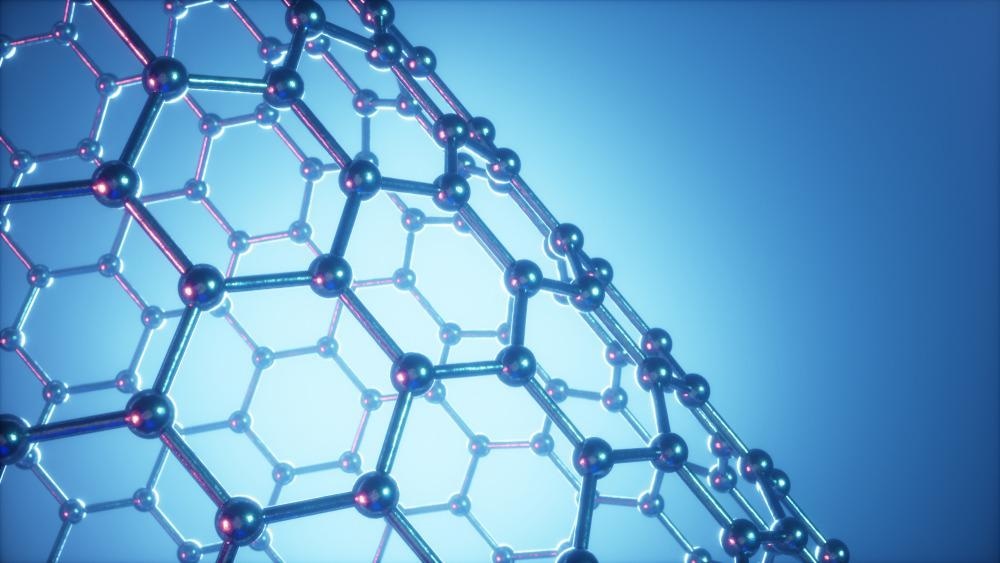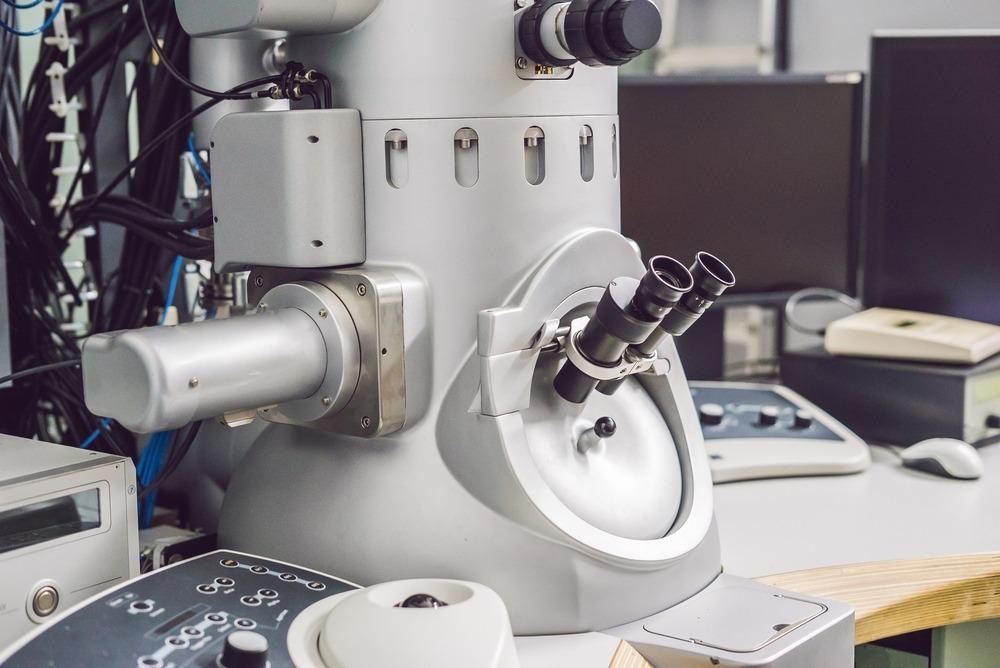Transmission electron microscopy (TEM) uses a focused beam of electrons to image a sample by transmitting the beam through it. Recent work has used TEM to investigate the temperature dependence of the structure of graphene oxide, focusing in particular on the placement of the oxygen atoms around the carbon lattice.

Image Credit: Rost9/Shutterstock.com
Normally, TEM is performed on samples less than 100 nm thick and has become very widely used for material characterization owing to its excellent spatial resolution.
TEM is compatible with a wide variety of material types, with a cryogenic version of the technique also being suitable for studying soft materials or liquid-containing materials.
The advantage of TEM for materials research is that the very high spatial resolution makes it possible to study the structure and bonding at the atomic level in a material, and it is relatively straightforward to combine TEM with analytical techniques such as electron energy loss spectroscopy (EELS) for elemental identification as well.
The elemental composition and atomic structural arrangement in materials are key to their function and properties, and TEM measurements can help understand how the atomic-level arrangements relate to the overall function of the material.
Graphene Oxide
Graphene is a form of elemental carbon that is only one atomic layer thick. Being made from a single atomic layer and having a lattice-type structure gives graphene many remarkable properties that are not seen in other types of carbon, including an incredible tensile strength.
Graphene oxide is an oxidized form of graphene that contains oxygen atoms embedded in its lattice structure.
The presence of oxygen disrupts the electrical conductivity exhibited by standard graphene but has many beneficial effects on the processability of the material.
Typically, graphene is deposited into layers using a technique called chemical vapor deposition. However, this is a time-consuming and expensive approach.
Due to the high temperatures required for the sublimation process that occurs as part of chemical vapor deposition, only substrates that can tolerate the high processing temperatures can be used.
Graphene oxide, however, is compatible with solution processing approaches and has shown some very promising properties that make it an excellent candidate for use in water filtration applications and as a material in batteries.
Combining TEM with Graphene Oxide
Owing to the high spatial resolution of TEM imaging, a study published in Materials Today observed how thermal diffusion changed the average domain size of graphene oxide, and that modifying the material to have larger graphitic domains leads to important effects on its properties that impact several of graphene oxide’s main applications.
One of these is that the larger graphitic domains lead to damping of water transport in the structure and suppressed overall swelling.
This is somewhat counterintuitive, as it was previously assumed that rising temperatures would lead to greater interlayer spacings and free transport of the water molecules.
However, the suppressed swelling actually arises from the layer spacings being locked together, and while the material does have a greater water uptake at higher humidity, the mobility of the water molecules is reduced.
The team has investigated this using computational modeling to compare the TEM results, and observed the same phenomena.

Image Credit: Elizaveta Galitckaia/Shutterstock.com
As well as using TEM to investigate the change in the oxygen positioning in the layers as a function of temperature, the team used electrochemical analysis to investigate how this structural change impacted graphene oxide’s ability to act as a single atom catalyst.
With the larger domains, the team showed that the catalytical activity was enhanced, and was able to use microscopy to investigate how elements such as iron or iridium were dispersed through the structure.
Looking to the Future
Being able to pinpoint the atomic structures and their changes and how they relate to the functional properties of interest for application is crucial for the intelligent design of materials.
By using the incredibly high resolving power of TEM, the team was able to directly image and profile the sizes of graphitic domains and distinguish the oxygen locations within them, finding the oxygen placement in the lattice becomes increasingly ordered at higher temperatures.
One of the main challenges for wider uptake of TEM in industries is, despite its atomic precision in terms of resolving power, the expense of TEM instruments and their upkeep.
TEMs are also often very bulky and demanding in terms of maintenance and skilled operation.
Needing such thin samples (on the order of nanometers) also makes the sample preparation laborious. Not all sample types are transparent to electrons or can survive the required vacuum conditions for the measurement.
However, TEM continues to grow in popularity for the analysis of carbon-based samples, and brighter electron sources are making it possible to record images faster and with greater clarity than ever before.
For graphene and materials research, TEM has a key role to play in advancing our understanding of the fundamental behavior of advanced materials, so that we can greatly accelerate the transition of these novel materials from laboratory curiosity to real-world working applications.
References and Further Reading
Mccomb, D. W., Lengyel, J., & Carter, C. B. (2019). Cryogenic transmission electron microscopy for materials research. MRS Bulletin, 44(12), 924–928. https://doi.org/10.1557/mrs.2019.283
Muller, D. A. (2009). Structure and bonding at the atomic scale by scanning transmission electron microscopy. Nature Materials, 8(4), 263–270. https://doi.org/10.1038/nmat2380
Zhu, Y., Murali, S., Cai, W., Li, X., Suk, J. W., Potts, J. R., & Ruoff, R. S. (2010). Graphene and graphene oxide: Synthesis, properties, and applications. Advanced Materials, 22(35), 3906–3924. https://doi.org/10.1002/adma.201001068
Foller, T., Daiyan, R., Jin, X., Leverett, J., Kim, H., Webster, R., Yap, J. E., Wen, X., Rawal, A., H. DeSilva, K. K., Yoshimura, M., Bustamante, H., Chang, S. L. Y., Kumar, P., You, Y., Lee, G. H., Amal, R., & Joshi, R. (2021). Enhanced graphitic domains of unreduced graphene oxide and the interplay of hydration behaviour and catalytic activity. Materials Today. https://doi.org/10.1016/j.mattod.2021.08.003
Disclaimer: The views expressed here are those of the author expressed in their private capacity and do not necessarily represent the views of AZoM.com Limited T/A AZoNetwork the owner and operator of this website. This disclaimer forms part of the Terms and conditions of use of this website.